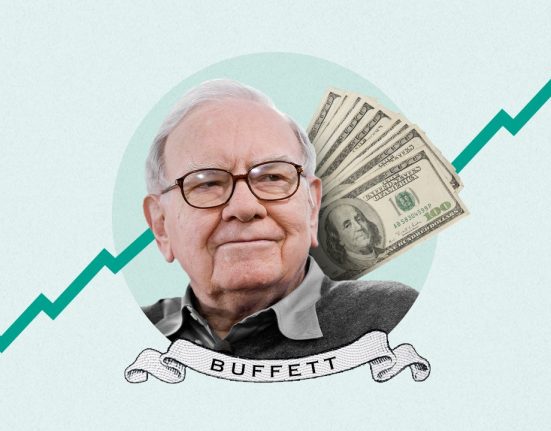
Yuichiro Chino/Getty Images
The Nasdaq stock index has had a phenomenal run over the last decade, rising an average of 14.2 percent annually and turning an initial $10,000 investment into more than $37,700. And investors have some easy ways to ride the Nasdaq using exchange-traded funds (ETFs).
Here are three ways to play the Nasdaq using ETFs and what to watch out for.
3 ways to invest in the Nasdaq with ETFs
Investors have a few ways to use funds to invest in the Nasdaq, including ways to short the index and even increase the index’s total return through a leveraged ETF.
1. A Nasdaq index fund
The easiest way to participate in the Nasdaq is to own a straightforward Nasdaq fund. This fund attempts to mimic the performance of the Nasdaq-100 index, which is a collection of the top 100 largest non-financial stocks trading on the Nasdaq exchange.
The key fund here is the Invesco QQQ Trust (ticker: QQQ), which charges an expense ratio of 0.20 percent annually, or $20 for every $10,000 invested. The striking thing about this fund is that it has actually substantially outperformed its target index, earning an average of 18.3 percent annually over the last decade, compared to the index’s 14.2 annual average gain.
If you want a fund that’s even cheaper – and there isn’t any good reason you don’t – then you could go with the Invesco Nasdaq 100 ETF (QQQM). It offers the same setup as the first fund but charges just 0.15 percent annually, or $15 for every $10,000 invested. While the fund has been in existence only since 2020, it has a similar performance as its larger cousin.
Nasdaq-tracking mutual funds are also among the top performing mutual funds, too.
2. A leveraged Nasdaq index fund
If the returns on a standard Nasdaq fund just aren’t strong enough for you, then you do have the option of investing in a leveraged Nasdaq ETF. This kind of fund owns some stocks but also a kind of derivative known as index swaps that allow the fund to rise faster than the index itself.
A key name here is the ProShares UltraPro QQQ (TQQQ), which targets three times the daily performance of the Nasdaq-100 index. The fund charges a healthy 0.88 percent of assets annually, but the performance has been worth that extra fee. The fund has delivered an average 36.8 percent annual return in the last decade – though not without a rollercoaster performance.
So that total return is ultimately about twice what the basic Nasdaq fund has returned.
3. A short Nasdaq index fund
If you’re looking to profit on the decline of the Nasdaq index – hey, it happens from time to time, despite the outrageous performance over the last decade – then you can use a short ETF. A short ETF typically performs inversely to the underlying index, going up as the index falls. To get that kind of performance, these funds use a kind of derivative called index swaps.
One of the most popular names here is the ProShares UltraPro Short QQQ (SQQQ), which targets three times the inverse of the daily performance of the Nasdaq-100 index. In theory, if the Nasdaq fell 1 percent, then this fund would rise 3 percent. Given the Nasdaq’s strong rise over the last decade, it’s little wonder that this fund has fallen an average of 52.5 percent annually.
That decline is not only due to the outperformance of the index but also due to the nature of the fund itself, which must continually maintain expensive derivative positions to fulfill its objective. The fund charges of 0.95 percent, which is not out of line with similar short ETFs.
What is the Nasdaq-100 index?
The Nasdaq-100 index is a collection of the 100 largest non-financial stocks trading on the Nasdaq exchange. The index includes the largest names in the tech world, including those in the Magnificent 7 stocks, such as Microsoft, Alphabet, Amazon, NVIDIA and Apple.
Because the index contains many of the largest tech stocks, the index is a good measure of the performance of the tech sector as a whole, and it’s often used as shorthand for the tech sector.
Tech stocks are regularly among the market’s highest-performing stocks on a monthly basis.
Risks of ETFs and leveraged funds
While ETFs can be a great way to play the Nasdaq index, they’re not without some risks and drawbacks.
- You won’t get the returns unless you hold: Traders who are buying and selling actively likely won’t enjoy the index’s strong long-term return. In fact, active investing tends to underperform passive investing. So if you’re shooting to enjoy the Nasdaq’s returns, then the best approach is to buy and hold a fund.
- Tracking risk: Any fund tracking an index may not accurately reproduce its performance. That’s the case for these Nasdaq funds, where the basic funds have dramatically beaten the Nasdaq’s performance by more than 4 percentage points annually. But it’s also true of the leveraged and short funds, which have added costs of derivatives.
- Structural costs: The leveraged and short funds have the extra costs of derivatives that act as significant drags on the performance of these funds. These derivatives have to be re-established on a regular basis in order to meet the objective of the fund.
- Volatility: The leveraged and short funds can generate serious volatility – which is part of the point – but if you’re investing in them, you need an iron stomach to gut it out.
While the Nasdaq is a popular tech fund, investors looking for broader diversification can look at the best S&P 500 index funds, which include the top tech stocks and hundreds of others.
Bottom line
Investors looking to piggyback on the performance of the tech-heavy Nasdaq index can use a variety of funds, depending on how they expect the index to perform. Investors should also consider working with one of the best brokers for ETF investing for a strong range of features.
Editorial Disclaimer: All investors are advised to conduct their own independent research into investment strategies before making an investment decision. In addition, investors are advised that past investment product performance is no guarantee of future price appreciation.







